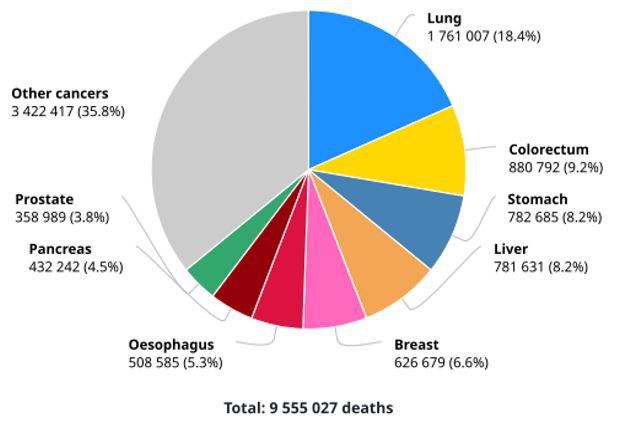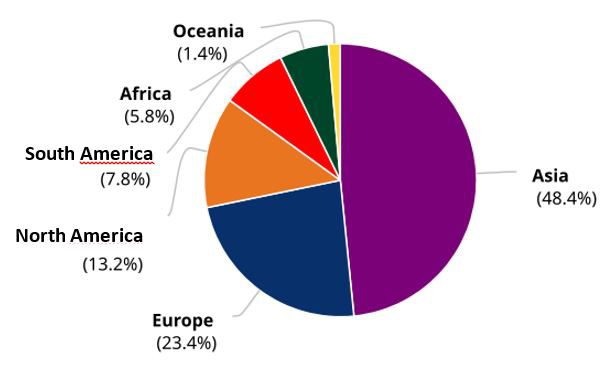World Cancer Day
Many people wonder why there is still no cure for cancer yet. But cancer isn’t just one disease. It is more than 100 diseases, and each of these types is divided into several sub-types. Thus, tumor heterogeneity, which leads to differential treatment responses, remains the leading challenge for effective treatment.
The World Cancer Day is a global initiative established in the year 2000 and led by the Union for International Cancer Control (UICC). Each February 4th it serves to raise awareness of the global battle against cancer and the urgent need for an improvement of cancer research, prevention and treatment. This year’s slogan “I Am and I Will.” is a reminder that everyone can play an important part in reducing the global burden of cancer and can impact his future. [1]
Cancer – Then and now
Fifty years ago, most cancers were treated with extensive surgical resections. For example, the radical mastectomy for breast cancer was initiated by William Stewart Halsted in the late 19th century. Removal of the entire breast, the pectoral muscles and the surrounding lymph nodes was supposed to be essential for curing the cancer and preventing it from spreading. Until the early 1970’s there was no evidence that this procedure really works as expected. The first conducted study regarding extensive resection finally proved that there was no survival benefit from this surgical procedure. [2]
Cancer has moved from the third leading cause of death in 1990 to the second leading cause in 2013, behind cardiovascular disease. Between 1990 and 2013, incident cases for every cancer increased worldwide, ranging from 9% for cervical cancer up to 217% for prostate cancer. Since the risk for most cancers increases with a higher life expectancy, aging contributed between 20% and 40% of these incidences. [3] Cancer is a leading cause of death worldwide, with 18 Mio new cases and 9,5 Mio deaths globally in 2018 (see Fig. 1+2). Approximately 65% of deaths due to cancer occur in developing countries (see Fig. 3). [4,5,6,7,8]



Cancer is estimated to become a major cause of morbidity and mortality in the coming decades in every region of the world. The rise in the ageing population is a primary reason for this negative trend, as already mentioned in the previous blog entry. In the last 15 years, life expectancy has increased by about 5% in Europe, over the past 15 years. So, 11% of women and 7.5% of men were 65 years or older in 2016. [9] Other risk factors, which act cancer promoting, are smoking and lack of exercises, for example. About 40 % of all new cancer cases in Europe could be prevented, if people were aware of these risk factors and the factors were greater included in early detection methods. [1,5,10]
The situation in developing countries
The rising trend of new cancer cases is a particular threat to developing nations with low and middle income. The deficient health systems cannot offer complex and expensive cancer treatments because of limited resources and lacking diagnosis and treatment possibilities. [3,5]
Thus, cancer is often diagnosed in late stages. [5,6] Further, poor education of health professionals, missing guidelines, limited facilities and oncologists for cancer treatment, misconception about pain drugs as well as a bad informing of patients by the physicians result in inappropriate cancer management. Many developing countries only invest less than 1% of the national budget into healthcare, in contrast to well developed countries investing about 7%. [7]
The global incidence of cancer is expected to rise from 18 Mio in 2018 to 22 Mio until 2030. Approximately half of the new cases are supposed to occur in developing countries, especially in Asia. [7,8]
Artificial Intelligence – A milestone in cancer therapy
Over the past decades, a continuous evolution in cancer research has been performed. Various modern diagnosis methods, like genome screening in early stage, allow the early identification of cancer diseases before they cause symptoms (see Fig. 4). With new state-of-the-art technologies using Artificial Intelligence, large amounts of cancer data have been collected. [11,12] Specialized computer-based methods improve the efficiency and quality of clinical work and reduce the number of medical errors. Cognitive solutions combine technical and industry-specific content with highly modern methods of machine learning to promote research. The idea of using Artificial Intelligence first developed in the early 1950’s. Alan Turing described basic approaches of using machine learning, genetic algorithms and deep learning in his article “Computing Machinery and Intelligence”. In 1956, Artificial Intelligence was officially named at Dartmouth College. [11,13]

AI technology has been widely introduced into various fields of diagnostics. The amount of data generated in clinical studies and other application areas doubles every three years. [13] Especially „omics“ data (e.g. genomics, metabolomics, proteomics) would be of no use without comprehensive analysis and the appropriate context. Newest bioinformatics approaches are based on the individual genetic signature of the patient’s tumor for receiving recommendations on the optimal therapy. So far, more than 50,000 cancer genomes are sequenced and millions of genetic variants are identified, which might impact the growth of cancer cells and might also influence the response to treatment. The comparison of patient’s data with high-quality literature from various databases supports the physician in choosing the best possible therapy individually. This modern system includes relevant information regarding health, costs and potential responses to certain therapies, thus improving the individual healthcare for patients while reducing costs, avoiding inappropriate therapies and faster receiving the right diagnosis. [12,13,14,15]
Future chances
Well developed countries are currently entering a new era of oncology. High-quality and comprising knowledge will ensure the appropriate use of the existing and huge amount of data and the state-of-the-art technical solutions which will be presented prospectively. The future of cancer prevention and therapy provides many new chances and challenges. Thus, promising techniques for early detection of cancer in combination with personalized therapy options allow not only the reduction of the expenditure of time, money and resources, but also the improvement of the physical and mental health of patients suffering from cancer.
Contact Person:



